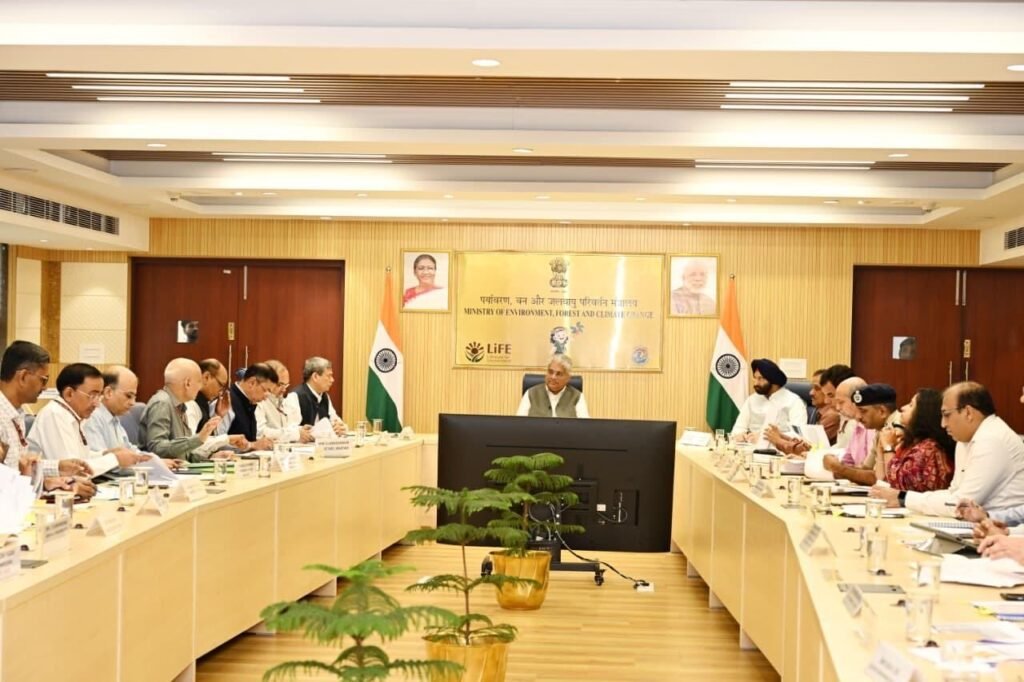New Delhi — Union Minister for Environment, Forest and Climate Change, Shri Bhupender Yadav, chaired a high-level review meeting to assess the progress of air pollution control measures in Delhi-NCR. The meeting evaluated compliance actions taken by various central and state authorities following the decisions made during the previous review held on September 16, 2025.

Cabinet Minister for Environment, Forest and Wildlife, Government of NCT of Delhi, Sardar Manjinder Singh Sirsa, was also present at the meeting.
Key agencies, including the Central Pollution Control Board (CPCB), Commission for Air Quality Management (CAQM), NITI Aayog, and representatives of the Government of NCT of Delhi, presented updates on ongoing interventions to tackle the region’s persistent air quality challenges.
Emphasizing the urgency of coordinated efforts, Shri Yadav called for stronger collaboration among the Central and State Governments, district administrations, and all implementing agencies to ensure on-ground execution of pollution control measures.
The Minister reviewed the installation of Online Continuous Emission Monitoring Systems (OCEMS) across red-category and other major polluting industries in the region, urging timely completion of the process. He also assessed paddy straw management efforts in Punjab, Haryana, and Uttar Pradesh, instructing CAQM to evaluate pellet storage capacity in pelletization and thermal power plants and ensure optimal use of machinery at custom hiring centers.
Also Read: MCD Unveils ₹523-Crore Plan to Curb Delhi Dust Pollution
Highlighting urban management aspects, Shri Yadav directed CAQM to convene a meeting with the Delhi government for effective utilization of construction and demolition waste. He also announced that the SAMEER app will now serve as the single unified platform for Air Quality Index updates across agencies.
Further, the Delhi government has been asked to submit a specific action plan for repairing potholes, which contribute to local dust pollution.
The meeting saw participation from multiple stakeholders, including officials from the Ministries of Housing and Urban Affairs; Agriculture and Farmers Welfare; Road Transport and Highways; NITI Aayog; CAQM; CPCB; and Pollution Control Boards of Haryana, Punjab, Uttar Pradesh, and Rajasthan.
Source: PIB
